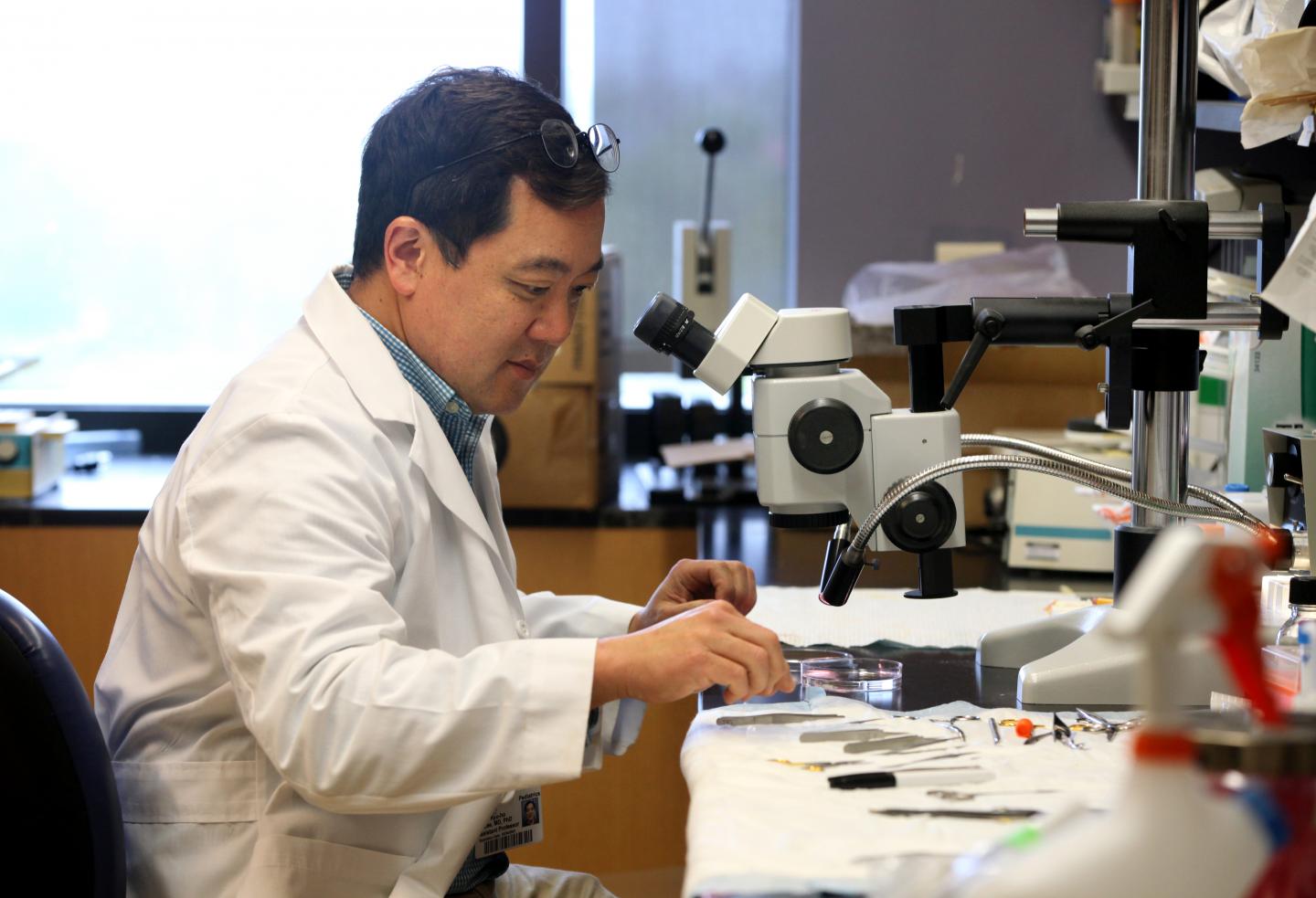Right-sided heart development requires rapid growth of precursor cells; silencing the gene Ccdc117 may impede that growth, leading to abnormal heart development, report investigators at the Medical University of South Carolina in Scientific Reports

Credit: Sarah Pack, Medical University of South Carolina
Almost one percent of all American babies are born with malformed hearts. Heart abnormalities are at once the most common and most deadly type of birth defect in the U.S.
Malformations in the structures of the right side of the heart have been linked to mutations in the master regulator gene Nkx2-5.
Researchers at the Medical University of South Carolina (MUSC) report in Scientific Reports that Ccdc117, a target gene of Nkx2-5 that is expressed in heart precursor cells, produces a protein that promotes rapid cell growth. That protein assists in the transfer of iron-sulfur compounds, created in the mitochondria, to the enzymes responsible for DNA replication and repair. When that protein is absent, the enzymes cannot synthesize DNA or unwind it to make repairs.
“When we removed this protein, there was a substantial decrease in the rate of DNA synthesis and a very big increase in the amount of DNA damage,” explains Kyu-Ho Lee, M.D., Ph.D., assistant professor of pediatrics at MUSC and senior author on the article. “The net result is that, without Ccdc117, cells stall in the early phases of division.”
Nkx2-5 has long been thought to promote the growth and division of precursor heart cells, but, before Lee’s finding, researchers did not know how it did so.
“We proved that there’s a linkage between Nkx2-5, a gene that’s very well known to be a frequent cause of congenital heart disease, and this iron metabolism pathway, which is also well known to control cell division,” explains Lee. “Cell division is an important issue in the developing heart.”
Mitochondria, which assemble iron-sulfur compounds, were once thought of simply as the powerhouse of the cell. They are now known to play important roles in many biological functions, including DNA repair and replication.
This linkage between Nkx2-5 and the iron metabolism pathway leads Lee to wonder whether lifestyle modifications by the pregnant mother, such as increased exercise and improved nutrition, could lessen the likelihood of heart malformations in the fetus.
Exercise can increase the number of mitochondria, thereby increasing the assembly of iron-sulfur compounds needed for improved DNA repair and replication.
“This is an unexpected finding that opens a new avenue for how we think about the genetic causes of congenital heart disease,” says Lee. “For the first time, it implicates a pathway involving iron metabolism. It provides a link between programs that control heart development that we know go wrong in congenital heart disease and everyday cell function that can be affected by things like nutrition and exercise and metabolism.”
For now, any connection between the general health of the mother and the risk of heart malformation in the fetus remains speculative. A definitive answer will require further study.
In future studies, Lee plans to examine the biochemistry underlying this pathway and to identify the types of congenital heart disease to which it is relevant.
“Our findings offer a new way of thinking about cell mechanisms that relate to congenital heart disease,” says Lee. “Iron-sulfur clusters have been in the background for decades in research into mitochondria. We are now beginning to understand their broader implications for general cell function. Our work once again underlines the significance of this pathway.”
Lee is also currently studying whether the expression of Ccdc117 in placental tissue plays a role in the growth of cells that knit together the maternal and fetal circulation.
He is exploring whether its absence or underexpression is linked to preeclampsia, a hypertensive disorder of pregnancy that threatens mother and baby alike.
###
Ccdc117 is a crossover gene of interest in the two lines of his research. Lee’s studies of this crossover gene were supported by pilot project funding from the South Carolina Clinical & Translational Research Institute, an NIH-funded Clinical and Translational Science Awards hub.
About MUSC
Founded in 1824 in Charleston, The Medical University of South Carolina is the oldest medical school in the South. Today, MUSC continues the tradition of excellence in education, research, and patient care. MUSC educates and trains more than 3,000 students and residents, and has nearly 13,000 employees, including approximately 1,500 faculty members. As the largest non-federal employer in Charleston, the university and its affiliates have collective annual budgets in excess of $2.2 billion. MUSC operates a 700-bed medical center, which includes a nationally recognized Children’s Hospital, the Ashley River Tower (cardiovascular, digestive disease, and surgical oncology), Hollings Cancer Center (a National Cancer Institute-designated center) Level I Trauma Center, and Institute of Psychiatry. For more information on academic programs or clinical services, visit musc.edu. For more information on hospital patient services, visit muschealth.org.
About the South Carolina Clinical & Translational Research Institute
The South Carolina Clinical & Translational Research (SCTR) Institute, a National Institutes of Health Clinical and Translational Science Awards hub, is the catalyst for changing the culture of biomedical research, facilitating sharing of resources and expertise, and streamlining research-related processes to bring about large-scale, change in the clinical and translational research efforts in South Carolina. Our vision is to improve health outcomes and quality of life for the population through discoveries translated into evidence-based practice.
Media Contact
Heather Woolwine
[email protected]
Related Journal Article
http://dx.




